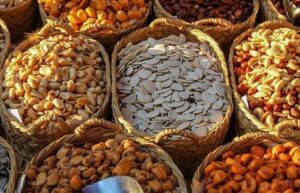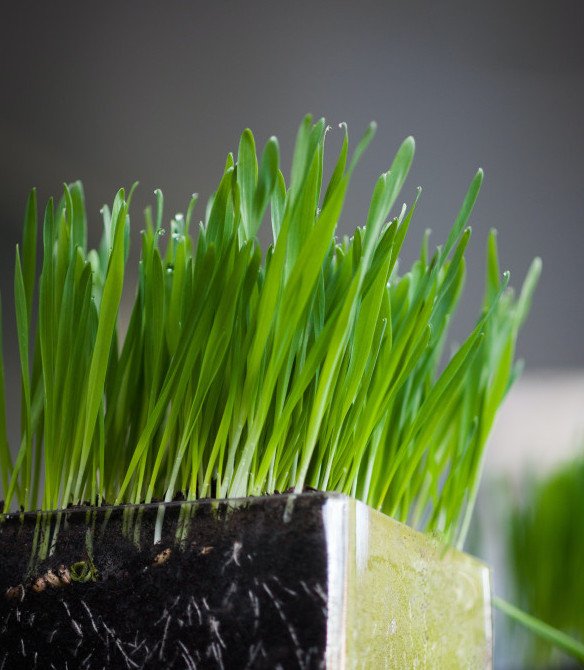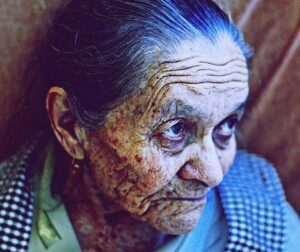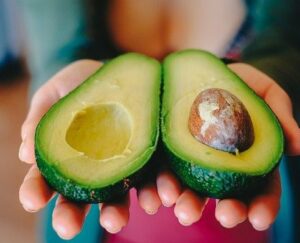
If you are trying to clear your skin and are planning on switching to a vegan or plant-based diet, you need to make sure that you are getting enough protein from your food.
Before the switch, most of us tend to think that we just need a few pieces of meat besides our potatoes and vegetables. As a result, we think that all we need is a few pieces of plant-based protein on our plates. .
The truth is, depending on your bodyweight, you need between 1 gram of protein to 1 kilogram of bodyweight. Even as much as 2.5 grams if you are athletic and exercise a lot.
Signs of Being Protein Deficient
These can range from thinning hair, to weak nails and wrinkled skin. Protein deficiency can also lead to brain fog and weak memory. Muscle mass loss can happen as well if insufficient protein is consumed from your food every day. You can notice this more as you get older. Also, deficiency in protein can cause hormonal imbalances that can cause you to get irritated easily.
So to keep your body looking young and healthy and happy, you need to have at least 40 grams of protein at each meal. Why so much? Our bodies can only absorb 20g of protein at one sitting. Therefore, if you eat at least 40 grams per meal, you are definitely going to get sufficient protein from your food.
Protein contributes to the maintenance, repair and growth of your muscles, tendons, skin, hair and nails.
On A Plant-Based Diet, What Foods Contain Protein?
Think tofu, beans, lentils, nuts and seeds. Grains like quinoa and wild black rice, spelt, wheatberries (wheat grain)
To make all of these types of plant-based protein digest in your body easily, soak them overnight and cook them the next day. Sprouting the lentils, beans and seeds is even better as the protein content increases by as much as 30%.
On the other hand, if you are just soaking the nuts first, you can make yoghurt, milk and thick cream out of this. You can do the same with soya beans.
So your protein-based meal could be beans, with quinoa and homemade tomato soup using spices of your choice. For example, fenugreek, cardamom, thyme and parsley.
This makes a great lunch or dinner and is very filling.
I must repeat and it is sad to see, older people who have very wrinkled skin on their faces are simply deficient in protein whether it is animal-based or plant-based.
For example, when I went raw vegan a few years ago, my face became very wrinkly after 4 months of this way of eating. As I did not know how much protein to eat on this plant-based diet, I switched to eating cooked chicken and oily fish to fix the problem.
My face filled out!!
Now I know better and eat at least 1 cupful of plant-based protein at every meal. 250 g or 8 ounces to be precise…
People remark that I look young despite my age. My secret? 6-8 glasses of vegetable/avocado smoothie a day and plenty of sunflower seed sprout or flaxseed meal.
I also eat tofu, okara (bean curd) bean and vegetable soups and plenty of lentil sprouts during the course of a week.
I still eat plantain, sweet potato and brown rice, but when my face starts to show a little bit of aging, I increase the amount of beans, sunflower seed sprouts. And also eat more avocadoes.
Exercise is important, so I tend to go for slow walks and also do some pilates each week.
As a side-note, I understand that most of you think of nuts as a tasty snack. They can be. But if you are replacing meat or fish and eggs, then you need to eat one handful of nuts or even two to get your daily requirement of protein.
What Is The Difference Between Animal Protein and Plant-based Protein?
Animal protein contains all 8 essential amino fatty acids of the 22 amino fatty acids which your body needs on a daily basis. Some of this aminos or ‘building blocks of protein’ can be produced by the body if enough protein is eaten.
Protein that you eat in nutritional terms is often calculated in relation to bodyweight and activity level. The more active you are, the more protein you need especially if you do vigorous exercise like a bodybuilder.
Subsequently, a complete protein can be a challenging macronutrient to include in a vegan diet.
The essential amino acids such as leucine, methionine, trytophan and lysine are frequently hard to get from a plant-based diet. (I’ll tell you what these particular amino acids do for you further down the page) Because of this, if you are planning to switch to a vegan diet (plant-based) you should have a variety of protein sources combined in one meal.
For example, sunflower seeds blended with brazil nut milk and 2 bananas plus raisins. Simple, filling and tasty!
Here, you have fruit (carbohydrates), seeds and nuts (plant-based protein).
I am not missing out fat as there is the correct proportion of protein to fat in all seeds and nuts. We just need to eat what Mother Nature has provided!
I do understand that some people are allergic to nuts, especially the skins. This could be because you need to have a colon or parasite cleanse. Then you will be able to tolerate nuts and seeds in their skins. Also, it could be the environment that the nuts have been stored that causes the reaction to nuts in some people.
Important…
Always eat beans and lentils with grains such as kamut, spelt or wild rice. As together, beans and rice make a complete protein.
Leucine, trytophan, methionine and lysine are amino acids that can be found in wheatgrass and wheatgrass juice. As only the juice from the young wheat is used, there should be no allergic reaction if the juice is truly organic. Wheatgrass is the one leafy green vegetable that contains a lot more protein than others. 
As it is potent, you only need a small amount – 30 ml, 1 ounce to begin with. If you have a fatty liver, then you may experience some nausea with wheatgrass juice. Which is best taken first thing in the morning on an empty stomach. To prevent you being on the toilet all day, it is recommended that you only have a maximum dose of 8 ounces daily.
If you are on the large side, you have been warned…!
Why am I mentioning Wheatgrass juice now? Because you can also get protein from leafy green vegetables. However, if you are really serious about maintaining your muscle mass and keeping healthy, wheatgrass juice is superior to parsley and coriander.
The wheatgrass juice provider I recommend is Brittsuperfoods.co.uk
Due to one of their family having eczema, Britt researched and found out about wheatgrass juice. She owns an organic farm which grows wheatgrass juice. It is juiced and frozen in 1 ounces sachets – 30 sachets in a packet. This is one month’s supply.
The more you buy, the cheaper the bigger your discount from Brittsuperfoods.com
Also, the protein content in wheatgrass juice is easily absorbed by the body. So you can rest assured that you are investing in a good product. It is a food that acts like medicine without the side effects…
You see, we should not only eat for the taste of the food and according to culture, we should eat for the nutrition the food gives. For example, vegetables are not only just necessary to eat, they tone up our colon and are filled with fibre that moves waste through our bodies.
Nuts and seeds are hormone balancers and are best eaten in their raw, unsalted state. When making dishes like nut milks or butter, you can still flavour the milk with dried fruit like dates. Or if making nut butter, some spicy seasoning will give it a nice taste. So this means you are getting the most nutrition out of the butter. At the same time this is tasty because of the spice you added.
To tell you the truth, it is an art to come up with tasty AND nutritious high protein plant-based dishes. I am still learning and we are all a work in progress aren’t we?
To find out more about protein for skin repair, visit this article by clicking here.
In the article you will find about animal-based protein and what kind of recipes to make for you healthy skin. Basically, you can the rule is not to be too hard on yourself by going cold-turkey vegan only to end up sick, because you are new to this way of eating. Go slow and steady, getting recipe books to help you along the way.
That way, you will get a clearer idea what is healthy and what is not. Make sure to stay clear of vegan processed food like vegan cheese or even cheeseburgers as they contain highly processed soya protein which may not agree with your body. Make a food journal each day, taking note of what dish you made and how your body felt on it.
This will save you from going to nutritionists to get wise about this subject.
Books I recommend that are available on Amazon are:
- The Raw Uncook Book by Juliano
- Living Foods for Optimum Health by Brian Clement
- Naturally Healthy Skin by Stephanie Tourles


8 comments
I’m curious because the human body is meant to eat animal protein and fats, I personally can’t see where we can make a plant-based protein match the natural protein our bodies are meant to have.
I can’t really understand why somebody would like to change to a vegan lifestyle, one reason I heard when I was reading about it was they felt sorry for the cows being milked.
Are they feel sorry for the chickens what’s wrong Tenten purposes were put on the earth for us to consume I’m sorry, I may not have been a perfect one to read your article although very informative.
Hey hey show me that you can substitute animal protein with plant protein, it’s just a shame that you have to have all the additives to make it close to animal protein.
Also, me being a real heavyweight myself I weigh up close to 300 lb I know if you looked on the label of a steak you’re not going to find any nutrition label.
Animal protein does not contain carbohydrates and carbohydrates are the key elements that put fat on your body, so there I can’t see how anybody trying to lose weight to be on a vegan diet and still accomplish his weight loss.
Thank you,
Bill Weight
Plant protein is more of a primary source of protein. And is absorbed by the body…Nuts, seeds and leafy vegetables and wheatgrass juice.
If you have more vegetables on your plate followed by seeds and plant-based carbs, you will lose weight. You will also get enough protein.
I managed to lose 20 lbs on a raw food diet when I did this for 4 months. For my skin…I went back to eating chicken and fish because my face went very wrinkly. It’s fine now. I have also regained the weight! Simple exercise like walking fast is good to do as well.
I have learned a couple of things in your post. But one of the most surprising is that old people don’t need to have very wrinkled skin. They can (or I can, LOL) avoid it by taking animal-based or plant-based protein. I thought it was just something of old age that we could not do anything about it.
What I noticed about older people in Nigeria (Africa) is that they aged very well and had few wrinkles. Mainly because they like their meat and fish stews.
Over here in England (UK), the English age faster because they don’t eat enough protein as I mentioned in this article. It’s just something I’ve noticed!
Hi there, this is a really informative post on getting enough protein when you follow a vegan diet. Protein is indeed the building blocks of our bodies, and it is very important to make sure that you do eat enough protein, if you are not eating animal products. Using nuts is one of my favorite ways of increasing protein intake, as well as seeds. Thanks for sharing.
I’m glad you enjoyed the article. I try to get my protein from various sources. Avocadoes, nuts and sprouted seeds which I soak overnight. This enhances the protein content of seeds like sunflower up to 30%.
Wow, I never realized that protein was so important when it comes to avoiding wrinkles. I think I also don’t get enough protein as I tend to stick to carbs which are my weak point. I am not mad about meat and eat chicken sometimes. However, I could probably follow this example and get more plant protein into my diet instead. I like eggs so I suppose that would also help a lot if I increased this in my diet.
Thanks for the excellent advice.
I’m glad you found this article helpful to you! Eggs are an excellent protein – I normally eat 4 a day myself. I also have salmon three times a week when I can afford it…